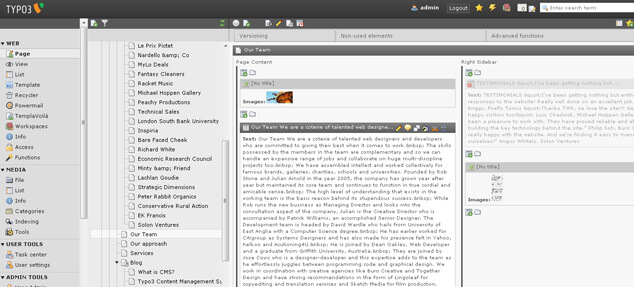What is CMS? – Content Management System
Popular as CMS, Content Management System is software that is run on a server and is a typical database application which makes publishing and administering the content absolutely easy. These collections of procedures are applied to ensure a smooth workflow and that too in a totally collaborative environment. And you must be wondering what these procedures would accomplish?
CMS allows ample scope for varied people to access, share and also contribute greatly to the stored data. The access to this stored data could be monitored and controlled too basing on the user roles. You could predefine the information that could be viewed, edited and published by user groups. Another major thing that the CMS allows is lending a valuable help in storing and retrieving all the data. It mitigates repetitions of inputs and also contributes greatly towards increasing the ease in which report writing is conducted. And most important of all, ensures that communication is free-flowing between users.
Chiefly playing the role of a central repository, CMS enhances the version level of the latest updates to already existing files. In short, Content Management System is used basically to store, control, revise, semantically enrich and publish documents.
CMS is touted as to improve the lifespan of a website on the online platform. Giving your website a new look basing on the trend and relaunching it would become extremely easy with this software and you may not even tamper with the existing content or the page architecture. Managing the content for you website becomes very easy. By employing a graphical UI, inserting images, multimedia files, scheduling content and creating text become very easy and thereby help you in maintaining a website that is dynamic in its true sense.
There are indeed a plethora of benefits that CMS brings along.
- First and foremost is the decentralized maintenance. All bottlenecks removed, and as a website owner you could edit anytime and anywhere too.
- Secondly, there is no need of technical expertise for making the changes. People who possess a basic work processing knowledge can make the requisite changes.
- Thirdly, access restrictions can be configured basing on the user roles.
- Basing on the content in the database, menus are generated automatically.
- With the storage of content in the database, it becomes very easy to reuse the content in various places and also format the same for compatibility with multiple devices like a web browser, a mobile phone or a printer or a PDA.
- A good Content Management System facilitates dynamic content like shopping carts, polls, forums, news management and any kind of drop-in modules too.
- You are in total control of the changes you wish to bring about on your website. And so daily updates can be made without involving programrs or web designers.
- Enforces great accountability for the editors of the content by way of log files and also provides for quicker updates.
- Content publication can be done at predetermined time. As the design and content are stored separately, the work that comes from different authors appears in a consistent design.
So, as the Open Source platform helps make use of the pre-existing technologies that have been built by a community of developers and is supported by thousands of them, you could opt for Typo3 or Magento or WordPress…the content management systems that we use for most of the websites. There are a lot of features in addition to the ones that we have discussed and each of the CMS comes in with a specific set of its own. So, basing on the business you run, and the requirement you have, you could probably consider the options available and choose your CMS…Typo3 or Magento or WordPress.













